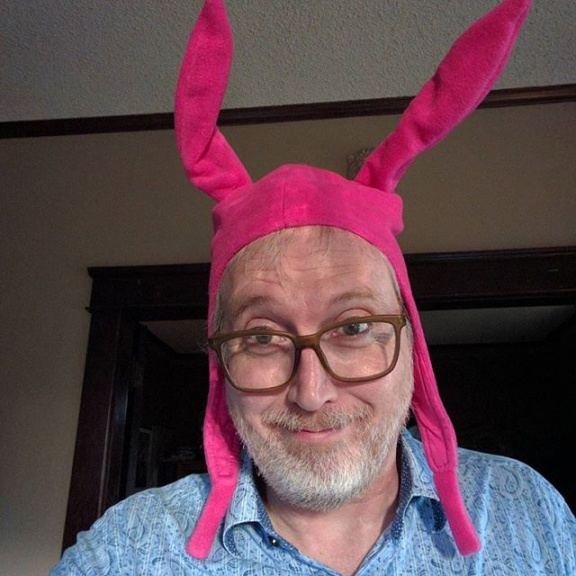Spotlight on Vanderbilt Biostatistics: Yuwei Zhu
This week's Spotlight series features one of our great faculty members, Yuwei Zhu. Read on to learn more about her impressive research with vaccine studies, and heed her advice for aspiring statisticians.
What was your draw to statistics and/or Vanderbilt?
Growing up, I always found math to be a riveting subject of study. As a college student in China, I eventually studied medicine instead, but I majored in preventive medicine which required additional courses in statistics and epidemiology, helping to nurture my interests in mathematics and statistics.
After joining my husband in America, we lived in Binghamton, NY where it was cold ten months out of the year, so we decided to go to somewhere in the South for my graduate education. However, Houston, TX was also too hot for me so eventually, we decided to move to somewhere a bit less warm and Vanderbilt was a perfect fit.
What have been some of the major findings so far in your research?
One of my main research interests is influenza vaccine effectiveness. As a vaccine advocate and researcher, I have been involved in influenza surveillance since 1999 and have been an integral part of research groups like the New Vaccine Surveillance Network (NVSN), Clinical Immunization Safety Assessment (CISA), Vaccine & Treatment Evaluation Units (VTEU), and US Hospitalized Adult Influenza Vaccine Effectiveness Network (HAIVEN). I also conduct data analyses to estimate disease burdens and influenza vaccine effectiveness (VE) by ED, outpatient and inpatient settings and by different age groups. Our findings have provided scientific evidence for the Advisory Committee on Immunization Practices (ACIP) to make vaccine recommendations. I have had papers published in the New England Journal of Medicine, JAMA, the Journal of Pediatrics, the Pediatric Infectious Disease Journal, and many others. Our next steps include studying household transmission of influenza viruses in the community and assessing the safety of quadrivalent, live attenuated influenza vaccine (LAIV4) versus quadrivalent inactivated influenza vaccine (IIV4) among certain risk populations such as children with persistent asthma.
Other research I’ve done has included a large etiology of pneumonia in the community, which determined the burden of pneumonia hospitalizations in U.S. children and adults and identified viruses and bacteria associated with these hospitalizations. Manuscripts describing this study’s results were published in the New England Journal of Medicine. Based on this study, we have built a prediction model to estimate pneumonia severity among children and our next step is conducting clinical trials using electronic health record (EHR) data to validate our model.
Tell us us about an impactful publication you have had.
I still remember my first New England Journal of Medicine paper published in 2006. It’s about the under-recognized burden of influenza in young children. In this paper, we estimated influenza rates by different medical settings. Later, the influenza vaccine was recommended to >= two years old rather than >= five years old among children after ACIP updated its guideline based on our results and other evidences. The recommendation helped me realize the importance of our study, the work we do, and its impact to the general population’s health.
What lessons have you learned from being a biostatistician?
The most important lesson I learned during my 20 years working is that we need to keep updating our knowledge. As you know, knowledge never stops accumulating, and we must work rigorously and tirelessly to make sure we’re keeping up with the newest, cutting-edge methods and techniques. Learning from colleagues, taking online courses, attending seminars and conferences regularly are great ways to continue education, which help us apply the most appropriate methods on projects.
What is your best advice for aspiring statisticians?
My best advice for aspiring statisticians is that the best statistician isn’t the one with the best technical skills. Being able to communicate properly and work alongside others is just as important. Statisticians need to be well rounded.
What is your secret to training up the next generation of statisticians?
I think I’m truly blessed because my MPH students tend to be very self-motivated in my experience. When it comes to teaching them, I strive to make sure that I’m as available as possible and offer them a variety of approaches and examples so that their learning is dynamic and memorable. I’m trying to provide them with an experience and education that goes beyond what somebody could find on a youtube video. Most of them value biostatistical support as a core part in their future research.
Tell us about your life outside of Vanderbilt . . . your family, your hobbies and your future goals.
My husband and I have been married more than 25 years and we have two wonderful sons. My eldest son just graduated college and my younger son is currently enjoying his first year at college! Growing up, my boys had dogs, birds, guinea pigs, rabbits, saltwater and freshwater fish, and a turtle (which is the only still with us today). I enjoy reading novels, traveling and tasting food from around the world. I also like having projects to do in my spare time. Currently, I’m trying to create a vegetable garden in my backyard. I’m also trying to participate more in local statistics or non-statistics events and maybe even write a book for my boys or their kids to know how we came to the States and lived.
Finally, what is something about you that most people at Vanderbilt still don't know about you? (Until now, of course!) The first flight I ever flew on was the one that took me to America. I landed in Anchorage, Alaska!
Spotlight on Vanderbilt Biostatistics: Yu Wang
This week we are excited to feature one of our postdoctoral fellows from the Center for Quantitative Sciences within the Department of Biostatistics. Dr. Yu Wang has had experience in both bioinformatics and biostatistics and is involved in some fascinating research. Read on to learn more...
Tell us about your current research focus.
By developing and adopting relevant bioinformatical and biostatistical methods on NGS and clinical data, my work is mainly focused on parsing genetic, transcriptomic, and immunogenetic features associated with response to anti-PD-1 and/or anti-CTLA-4 immunotherapy in patients with malignancies, and developing biomarkers by combining different features to help discriminate patients for choosing more reasonable therapy strategy.
It’s a very challenging and hot topic with significant breakthrough in cancer therapy. I feel excited and lucky to be involved. I set up pipelines for immunogenetic signature evaluation, immune cell composition and neoantigen prediction by integrating WES, RNAseq and SWATH-MS proteomical data. By cooperating with our collaborators, we combine multidimensional data from the somatic mutation and expression profiles, to immunogenetic features in TILs, to depict the key players associated with the response to immune checkpoint blockade therapy and clinical outcomes.
What was your draw to statistics and/or Vanderbilt?
Even though I am working with a lot of biological and clinical data daily, I am still a beginner in biostatistics. I really appreciate the environment provided by our department. I can learn a lot of statistics from our colleagues, courses, workshops, etc. I realize that not only the concepts and methods but also the way of thinking in biostatistics is critical for data science. I cherish the opportunities of being surrounded by the experts, and I hope I can add the cannon into my armory.
Tell us about your publications and research findings.
My most recent first author manuscript was sent out for reviewing and in that manuscript we show that rare mutations in antigen processing machinery are associated with high mutational burden and an enhancement of predicted neoantigens, providing insights into the mechanisms of high mutation burden in some patients. I had previously published about 20 papers in plant science before I joined VUMC. After I transferred to the biomedical research field, I participated as a co-author in several publications in biomedical/clinical journals, like Nature Genetics, NPJ Breast Cancer, JCI Insight, bioRXiv etc.
What makes Vanderbilt special in your experiences of collaborating with others?
It’s actually my favorite part about working in CQS/Biostatistics/VUMC. With Dr. Xu's help, I am able to be focused on a specific and challenging topic with many active collaborators who work in cancer cell biology, cancer immunology and in the clinic at VUMC. They are all immunotherapeutic experts and can provide valuable data and suggestions. I can always count on help from my colleagues in many ways and know who to turn to for help with questions I have pertaining to NGS data analysis, cloud computing, REDCap and many other areas. The atmosphere of collaborating is critical for personal development as a researcher in interdisciplinary fields, like bioinformatics, and for trying to make efforts to study complex diseases.
Tell us about your life outside of Vanderbilt. Do you have a significant other? Children? Pets? What about your hobbies? What are your goals for the future?
Music, cuisine and basketball feed my body and soul. The Spurs with Tim Duncan is my favorite team. I have been married to my wife for eight years. She was my classmate in college and is currently pursuing a MS’s degree in Biostatistics. We really hope to add new members to our home soon; I had a German shepherd when I was in high school and we plan to adopt a puppy next year.
Finally, what is something about you that most people at Vanderbilt still don't know about you? (Until now, of course!)
Well, this is a good opportunity to explain how to pronounce my first name “Yu”. It’s totally fine for me if you say it as ‘/ju:/’, like in “Thank you”. But if you want to know something about Chinese language or just for fun, here are tips. Some of you may know that there are many Chinese characters. Each character has a sound (some have multiple). And for each sound, there are four tones. The “u” here is a vowel which is not exist in English (that is why it’s difficult for native English speakers and it is actually written as “ü”). Here is a link of explaining how to pronounce it. Here is an example on YouTube. My name is the fourth tones. Try it!
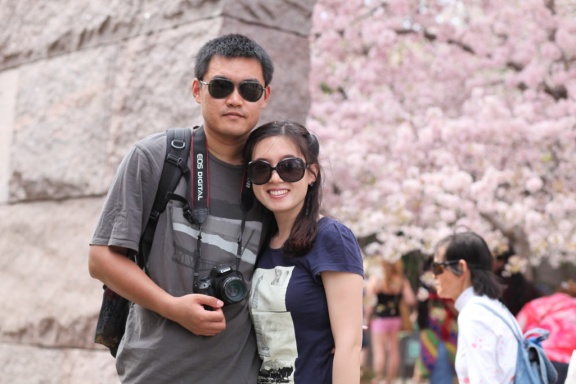
Spotlight on Vanderbilt Biostatistics: Ahra Kim
This week's Spotlight features one of our newer staff biostatisticians, Ahra Kim. Learn how this Southern California native ventured East to Nashville for a great opportunity in research and is now learning to brave the winters, all while providing statistical support to her collaborators here at Vanderbilt.
Tell us about the research you are involved in.
I am involved with three collaborations here at Vanderbilt. Half of my time is spent working on projects with the Caribbean, Central and South America network (CCASAnet) for HIV epidemiology. It consists of HIV clinical sites from seven countries in Latin America, and is also a member of a larger consortium, International Epidemiologic Databases to Evaluate AIDS (IeDEA). In one study, we are comparing outcomes such as mortality, retention in care, and timing of antiretroviral therapy initiation in HIV infected adults with and without tuberculosis. We have recently submitted several abstracts to a conference and are currently working on additional analyses for manuscripts.
My two other collaborations are with the Department of Psychiatry and Center for Biomedical Ethics. For one project in Psychiatry, we are interested in assessing how catatonia and delirium affect survival in critically-ill patients. For Biomedical Ethics, we have been trying to better understand characteristics of patients needing ethical consults for controversial topics like organ donation or treatment decision making, as well as practice patterns of clinicians when it comes to these issues. I am grateful to be working on such a wide range of interesting projects.
What was your draw to statistics and/or Vanderbilt?
I was drawn to statistics in a non-traditional way since I have a social science background. I enjoyed doing research, but many of my classes as an undergraduate involved secondary research and I wanted to do something more hands-on. I was fascinated when I took a course in biostatistics, which was my first exposure to learning R programming. This encouraged me to pursue a master’s degree in biostatistics. Joining the Department at Vanderbilt was an amazing opportunity for me as a new graduate, so I relocated from California.
What lessons have you learned from being a biostatistician?
Though I haven’t been a biostatistician for very long now, I’ve learned that being organized and transparent is key. Sometimes projects pause and resume months or even years later, so it’s helpful to clearly document everything and practice reproducibility to avoid confusion and save time in the long run.
What makes Vanderbilt special in your experiences of collaborating with others?
The collaboration opportunities here have been wonderful. Everybody has been very kind and respectful, and view statisticians as valuable team members. I also appreciate the diverse resources and how there are so many experts in various fields that you can learn from, especially if you encounter a difficult problem in an area you may not be familiar with.
Tell us about your life outside of Vanderbilt. Do you have a significant other? What about your hobbies?
I have been engaged to my fiancé for almost a year now and will be getting married next spring. We both moved here from California. Outside of work, I enjoy a variety of hobbies including hiking, playing tennis, and practicing yoga. I also like to see live music performances, visit cool galleries or exhibits, and occasionally attend sporting events.
Finally, what is something about you that most people at Vanderbilt still don't know about you?
Prior to moving to Nashville, I lived in an inland region of Southern California (Inland Empire) where summer temperatures can reach highs of 116 degrees Fahrenheit. Winters are usually mild with highs in the 60s. Coming to Nashville, I was shocked to see temperatures drop to single digits last winter. Though I’ve been here for a year and half now, I still haven’t acclimated fully to the cold!
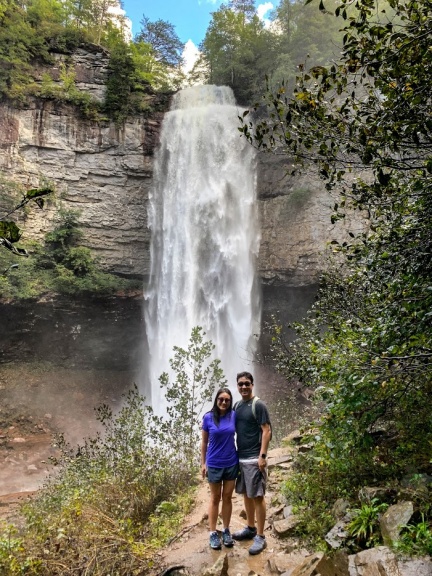
Spotlight on Vanderbilt Biostatistics: Elizabeth McNeer
We have a new staff member onboard! Elizabeth McNeer recently joined our group as a Biostatistician II. Read on to learn more about her studies and interests here:
What is your area of focus?
I’m just starting out as a biostatistician, so I don’t have much research experience yet. My master’s thesis work under the direction of Dr. Dandan Liu focused on evaluating the impact of various chart review strategies using electronic health record data in the context of risk prediction modeling. I currently work with researchers in the Vanderbilt Center for Child Health Policy where I’m involved with various projects that focus on improving the well-being of children. I have ongoing projects dealing with topics such as hepatitis C testing in infants and mechanical ventilation in the neonatal intensive care unit.
What was your draw to statistics and/or Vanderbilt? What has served as the pathway to your position?
As an undergraduate, I majored in math and biology, so I wanted to find a career that would combine both of my interests. I also had an interest in the medical field, so the biology courses that I chose to take were the same courses that the pre-med majors took. During the summer after my junior year of college, I attended a Summer Institute for Training in Biostatistics program at Emory University. After this program, I knew that I wanted to pursue a graduate degree in biostatistics. I came to Vanderbilt in 2016 after graduating from Mississippi College, and I earned an MS in Biostatistics in the summer of 2018. Because of my interest in the medical field, I knew that I wanted to work at a medical center like Vanderbilt, so I’m excited to now be working in the same department where I spent two years as a student!
What makes Vanderbilt special in your experiences of collaborating with others?
I’ve found that my collaborators treat me like a valuable part of the group and want me involved in the entire project, not just the parts involving statistical analysis. My collaborators value the work that I do, which makes coming to work enjoyable. I’ve also been encouraged to continually learn and apply new skills to the projects that I work on.
Tell us about your life outside of Vanderbilt.
After being in school most of my life, I’m really enjoying not having constant homework and studying to do! I enjoy reading, watching Netflix, playing board games, and hiking every once in a while. I attend The Church at Avenue South, and I also tutor math on the weekends. Also, I very much enjoy Jeni’s ice cream.
Finally, what is something that most people at Vanderbilt still don’t know about you?
Long before I took my first statistics class or knew I would have a career in statistics, my dad bought me a baseball score book and showed me how to keep baseball statistics. In elementary and middle school, I would keep stats for my brother’s Little League teams just for fun. Keeping stats helped me understand and appreciate baseball, and I still enjoy going to an occasional baseball game.
Spotlight on Vanderbilt Biostatistics: David Biagi
Next up in the spotlight is one of our Senior Project Managers in the Center for Quantitative Sciences, Mr. David Biagi . Learn more about his role on the team and how he may find favor with a four-legged creature in the coming year . . .
Tell us about your group and role within the CQS IT team.
Our team in the Collaborative Studies Coordinating Center provides database and development support to a wide range of research projects. Our goal is to remove technological barriers for our collaborators. Currently we maintain a wide variety of projects for international research groups, including virtual bio-repositories, clinical trial management systems, and outcome aggregation systems. We hope to continue to enable science-at-scale by helping researchers pool their data, resources, and efforts.
What drew you to Vanderbilt and what has been your experience working in a collaborative environment such as this?
I was attracted to Vanderbilt by the personal recommendation of several colleagues. That trust was not misplaced, as it has been a great place to build a career over the last ten years. I have always felt like my input was valued and appreciated the way I have been enabled to pursue and achieve goals I've suggested in support of the department's efforts.
Tell us about your life outside of Vanderbilt. Do you have a significant other? Children? Pets?
I'm married to my high school sweetheart and we have four daughters ages six months to seven years old. There's a long standing family debate raging over whether or not we should get a dog. I stand alone in opposition and I plan to lose this debate sometime next year.

Spotlight on Vanderbilt Biostatistics: Simon Vandekar
Meet one of our newest faculty members, Dr. Simon Vandekar, an Assistant Professor in the Department of Biostatistics. He is a great addition to our group and it's a pleasure to get to know him.
What are your research interests and what is the focus of your research? What have been the major findings so far?
My statistical research develops inference procedures for high-dimensional data with a particular focus on neuroimaging data. This research has been published in Biostatistics, Neuroimage, and JASA. My collaborative research studies how the brain changes through development and how it is affected in psychiatric disorders. This work has been published in the Journal of Neuroscience, Nature Communications, and Science. My research has relied on family-wise error rate, spatial extent inference, and semiparametric procedures and I would like to begin to develop nonparametric procedures that control the false discovery rate. I am also interested in high-dimensional measures of replicability and the stability of findings across varying preprocessing parameters.
Tell us about any honors you have received, awards you have won or any significant publications you've had.
I was awarded the Saul Winegrad Oustanding Dissertation in my graduate group when I graduated in May 2018. My most recent first author publications were in JASA, Biostatistics, and the Journal of Cerebral Blood Flow and Metabolism.
What was your draw to statistics and what are some of your goals?
I realized I loved statistics after working in a neuroimaging lab after graduation with a BS in psychology. The goal of my research is to develop statistical tools that can be immediately applied to real world problems. I am most interested in semiparametric methods to do this.
Can you share the status of any of your past students? What is your philosophy about teaching or research?
I haven’t mentored any students, but I look forward to the opportunity! I personally learn mathematical or statistical tools best when I use them to solve problems in my research. I think statistical methods should try to make realistic assumptions about the data and that the analysis approach should be determined by particular questions or hypotheses.
What makes Vanderbilt special in your experiences of collaborating with others? What are your thoughts on controversial statistical topics such as adjusting the p-value for multiple comparison, the choice between Bayesian, likelihood, or frequentists, ethical issues, etc.?
The collaborators I’ve worked with here seem extremely focused on the wellbeing of their patients, which makes working with them more rewarding. My work is in multiple comparisons adjustment and I see it as a way for understanding the amount of bias induced by looking at hundreds of thousands of variables, but I don’t think that we should use hard thresholds to decide about the unknown state of the world. Two studies that presents results with and without adjustment are equally valid, but the first provides more evidence against the null hypothesis. I am interested in learning more about semiparametric likelihood and Bayesian methods. I like the probabilistic statements the Bayesian philosophy affords but have an aversion to priors or heavily parametric models because I’m not sure how assumption violations affect the bias and interpretation.
Tell us about your life outside of Vanderbilt. Do you have a significant other? What about your hobbies?
My spouse currently lives in Houston with our two dogs (a dachshund and a basset-lab mix), where she is doing an internship, but she will get to move here soon! I like hiking, camping, running and visiting the many delicious breweries we have in Nashville. I also like foraging for mushrooms.
Finally, what is something about you that most people at Vanderbilt still don't know about you? (Until now, of course!)
My wife and I dabble in extreme sports. My favorite was hang gliding, but we also tried sky diving and go scuba diving not too infrequently.
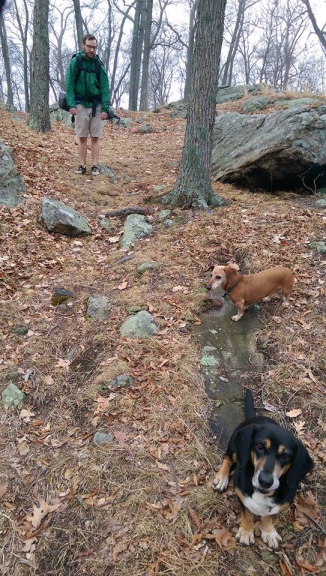
Spotlight on Vanderbilt Biostatistics: Rafe Donahue
Today we are getting to know one of our Department's adjunct professors, Dr. Rafe Donahue. Get the inside scoop about his research and interests!
What is the focus of your research and what have been the major findings so far?
As an adjunct faculty member working in industry, my research doesn't quite line up with the research of my strictly-academic colleagues. The work I do, however, helps patients in a very direct sense, by getting products to market for the benefit of patients and health care providers.
The work that has kept me busy for the last decade or so revolves around a growth factor used in joint fusions, surgeries that eliminate pain by making two bones grow together across a joint that, typically, is damaged by arthritis and thus is painful. This growth factor, we have shown, when properly applied, can be used in place of an autograft, a piece of the patient's own bone, harvested from elsewhere in the body. These autografts can themselves result in problems, hence the value of a product that can be used in their place.
Tell us us about any recent publications you've had.
Our research typically gets published in major medical journals. I was fortunate to get recent publications in Journal of Bone and Joint Surgery, Foot and Ankle Surgery, and Foot and Ankle International.
What was your draw to statistics at Vanderbilt and what have you learned as a statistician?
The Vanderbilt biostats group is a vibrant team of fiercely-bright, top-notch professionals who are not only good statisticians, they are also good people. My relationship with Vanderbilt provides a strong connection to the academic world and provides valuable support to keep the work I do grounded.
Being a statistician has helped me understand how to look at data and see more than just means; it's about understanding variability and distributions.
What is your best advice for aspiring statisticians?
My advice to aspiring statisticians is to commit to getting details right, whether they are statistical or scientific. It's not good enough to say, "Well, that's good enough." Credibility comes with getting the details right. Learn the science; become conversant with your collaborators; don't accept being just a "Would you like fries with that analysis?" kind of statistician. If your collaborators only want someone to compute p-values and sample sizes, get different collaborators.
Good statistics is about good design. Fancy analyses will not save poor design.
Oh, and if your program takes days and days to run, either your analysis is too complex or your coding is not optimal. Or both. (That'll fire up somebody.)
What are your thoughts on controversial statistical topics such as adjusting the p-value for multiple comparison, the choice between Bayesian, likelihood, or frequentists, ethical issues, etc.?
General statistical rant:
We can be our own worst enemies sometimes because of how we teach statistics. Look at the typical class: roll some dice, deal some cards, flip some coins, probability, conditional probability, here's how to compute a mean and a standard deviation and a median, here's how to do a t-test, f-test, chi-square test, regression, Bayes rule, use this R code to compute this, use this R package to compute that, use this SAS program to get data into a format for submission to FDA: everything we teach them is _technical_.
But if you go to seminar, the discussions aren't technical; they are strategic. "How does this impact the bias?" "What does this do to the Type I error rate?" "How does one present these data in the context of treating patients?"
So, people take our courses and they think that we are technical people doing technical work and they think, "I'll just save a ton of time and money and just download a copy of the super-EZ-stat app for Excel and I'll do this all myself!" Or they think, "All I really need is a sample size and I'm too busy to do it myself; I'll just have the statistician compute that sample size for me when I'm in Boca next week."
But, as we statisticians know, it's much more complicated than that. THIS STUFF IS REALLY HARD. And it takes a lifetime to REALLY understand it. There's a great article out there somewhere by Dick DeVeaux and a buddy called something like "Math is Music, Statistics is Literature" It says that you can be a child prodigy in math and music because they are fields that are completely contained within themselves, so you can get folks like Mozart, who composed as a small child, and Guass, who showed, also as a small child, that the sum of the first n integers is (n)(n+1)/2.
But to write really good literature and to do really good statistics, you need to have life experience. You need to understand the human condition and have seen the world in action.
Statistics isn't technical, even though we teach it that way.
Multiplicity/testing thoughts:
Feel free to do multiplicity adjustments but, better yet, show me the whole distribution of p-values (and not just the mean). How do we deal with correlation? How do we deal with the fact that in my lifetime I have look at thousands and thousands of p-values? What's the impact of that?
P-values and inferential statistics only work in a narrow, forward-looking framework: "If I run this experiment and if the null is true and if the data follow the distribution laid out in my plan, then the chance of a false positive outcome is 5%...". Once the trial is run, everything is subject to all sorts of philosophical nuance. We need to be very careful.
There's a big difference between inference from planned experiments and modeling data from EMRs and the like. Bayesian stuff is great for things like that but not so much for planned experiments.
And let's not think that Bayesian methods, as slick and sexy as the math is, are a panacea for all the ills in our modern stats world.
Ethical issues thoughts:
This should go without saying but let's not lie or cheat or stack the deck or mislead. We are nothing as statisticians if we aren't trustworthy. We shouldn't have to teach that but if we do, so be it.
Tell us about your life outside of Vanderbilt. Do you have a significant other? Children?What about your hobbies and future goals?
I have a wife of 27 plus years; we have a little doggie and live south of Nashville in warm and cheerful Nolensville. We are active members of Holy Family Catholic Church in Brentwood.
We have three children. Harry (b 1993) is a lieutenant in the Army stationed (currently!) in Tacoma, WA. Zach (b 1994) is a second-year law student at the University of St. Thomas in Minnesota. Olivia (b 1996) is an artist and care-giver living in Overland Park, KS. They are wonderful sources of Joy and Light.
I have a couple of things that keep me busy outside of work. We have a very large and well-organized Lego collection and we build things and go to conventions and all that. We are part of a local Lego club that hosts an event every November at the public library in Nashville. I typically build replicas of buildings I like or mechanical computing machines.
I also like to make sawdust in my workshop and the occasional furniture that might result from that.
I would love someday to own and run a working bison ranch but I'm thinking that's not going to happen.
Finally, what is something about you that most people at Vanderbilt still don't know about you?Here's something about me that most people don't know: I applied for the astronaut program at NASA several years ago. I actually successfully navigated the application process and my credentials were reviewed. I was, of course, rejected; but I successfully made it through the process. It was a very interesting experience!
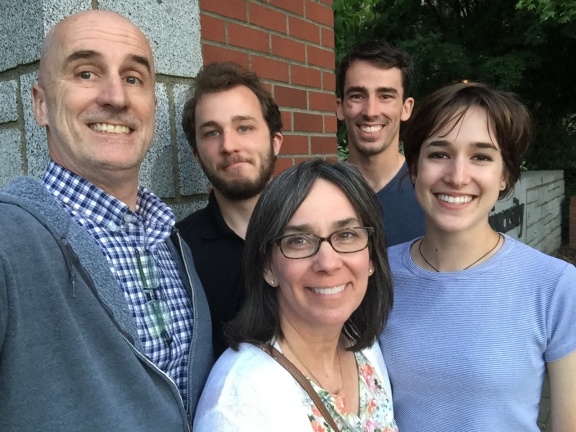
Meet the New Faces of the Vanderbilt Biostatistics Master's and PhD Programs!
The Vanderbilt Department of Biostatistics proudly welcomes its newest students into the Master's and PhD programs for the 2018-2019 academic year!
In our Master's program, we have Ryan Moore joining us from the College of Wooster, Yan Yan from Middle Tennessee State University, and Yue Gao who recently received her master's degree from Peabody at Vanderbilt.
In our PhD program, Rebecca Irlmeier joins us from the University of Missouri, Julia Thome from Cornell College, Chiara Di Gravio has arrived from the University of Southampton where she was working as a Statistician, and Yi Zuo from University of Boston School of Medicine where she was working as a Lead Statistician.
We are so grateful to have these new faces here on campus. Here's a big congrats to an exciting new chapter in your life!
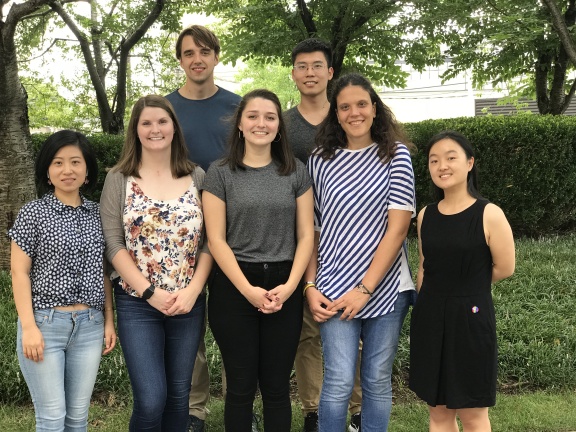
Spotlight on Vanderbilt Biostatistics: Dan Byrne
This week we are featuring Dan Byrne, Senior Associate in Biostatistics and Director of Quality Improvement & Program Evaluation in the Vanderbilt Department of Biostatistics. Read on to learn more about his work and interests here at Vanderbilt.
What is your area of focus and what have been the major findings so far in your research?
My research focuses on how we can use biostatistics, predictive models, and artificial intelligence to improve health outcomes. In our Learning Healthcare System Platform, we have created a "Dream Team," which is working on conducting large pragmatic trials during routine clinical care. Recently, we published two papers in The New England Journal of Medicine showing that balanced IV fluids are superior to saline. We estimated that these findings could save thousands of lives per year. The next step in this research is to ensure that these safer fluids are ordered in the hospital and assess the impact on mortality. In other words, have we completed the last mile of work in biostatistics to make sure our results are implemented in a sustainable way?
Tell us about your publications.
I have published more than 130 papers and one book, “Publishing Your Medical Research”; 18 years ago, I was recruited to Vanderbilt based on this book.
What is your current research interest and what do you hope to see come from it in the future?
My current interest is in testing with randomized controlled trials how artificial intelligence methods can be used to improve patient outcomes. Our Cornelius team has created a large number of real-time predictive models, for example for readmissions and pressure ulcers, and tested these in randomized controlled trials. We are now exploring Deep Learning methods and working to create the Vanderbilt Artificial Intelligence Lab (VAIL). The current challenge is how to integrate predictive models and AI tools into hospital operations while conducting a randomized controlled trial. This will be the area in which Vanderbilt can become a leader in this exploding field.
What is your best advice for aspiring statisticians?
My advice is to be relentlessly helpful and positive in teaching biostatistics and supporting physician-scientists so that they can become successful researchers. Also, I would advise aspiring statisticians to become leaders at making forward progress in improving health outcomes and avoid the Brownian motion of academic medicine. Over the past 35 years, I have trained hundreds of physician-scientists, mostly in the MSCI program; and this approach has worked for me.
In your experience, what makes Vanderbilt special?
The research that we are doing in the Learning Healthcare System and artificial intelligence requires an enormous amount of collaboration and respect for the scientific method. Vanderbilt is uniquely positioned to be a leader in this area based on our culture of collegiality and our strength in medical research. It has been an honor to work with so many amazing people at Vanderbilt and see all of these programs that we created flourish and help others, for example: the Department of Biostatistics, The Biostatistics Graduate Program, Biostatistics Clinics, Clinical and Translational Research Studios, Go for the Gold employee wellness program, Flulapalooza, CRC Research Skills Workshops, the Learning Healthcare System Platform, The Master of Science in Clinical Investigation program, and the Cornelius predictive modeling project. Before coming to Vanderbilt, I was a self-employed statistical consultant for 10 years. Hopefully, based on this experience and our culture, we can be as nimble as entrepreneurs and as rigorous as academics to develop and test artificial intelligence methods in a way that impacts health outcomes.
Tell us about your life outside of Vanderbilt.
I have a wonderful wife, Loretta, and two great children, Michael and Virginia; and I enjoy taking adventurous vacations with my family. I just returned from a 4-day sailing trip with my son Michael.
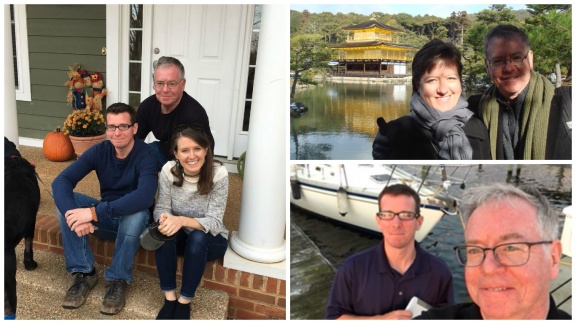
Spotlight on Vanderbilt Biostatistics: Shawn Garbett
This week we are excited to feature one of our IT team members in the Spotlight series. Shawn Garbett, a Senior Application Developer in the Vanderbilt Department of Biostatistics, tells us more about his interests and research.
What was your draw to statistics and/or Vanderbilt?
I have always had a love of mathematical modeling throughout my career starting with hydrology models at TVA. I was hired into the Quaranta lab doing mathematical models of cancer progression here at Vanderbilt and got to work with a wonderful group. There was a desire to tie the models to observed microscopy data and I discovered the depth of statistical reasoning researching the problem. This led to statistics becoming a new passionate pursuit to the point I went back and got my masters at Penn State in applied statistics. Working with a department full of world class statisticians is a dream come true.
Tell us about a major finding in your current research.
On my current health policy project, I've found a technique that allows one to have tunnel states with memory accurately inside a Markov model. Many observed risks are of the form "For X years after event Y the risk is Z". This violates Markov assumptions as it requires memory of an event in time, but Markov models are a preferred method in the economic modeling domain. With this method discovery one can continue to the Markov modeling framework with minor adaptation without relying on ad hoc methods while having states with memory.
Tell us about a significant publication that you've contributed to during your career so far.
If I were to pick a publication to highlight, it's "An unbiased metric of antiproliferative drug effect in vitro". Mass screenings of cancer drugs were based on a metric developed back in the 1970s. The growth inhibition effects were being estimated without log scaling the observed cell sizes. Further complicating the observations is that there is a non-linear (even on log scale) effect as cell requilibriate to their new conditions, i.e. long term response is not short term response. A more robust measurement of growth effect could be made with the same equipment, but by simply log scaling data and shifting the time window of observation post equilibration. This has led to increased accuracy in cancer drug screening.
What is your philosophy about teaching and/or research, and what is your best advice for aspiring statisticians?
I think teaching and research go hand in hand, and love the fact that statistics is now part of elementary education in the US. Sarah Fletcher was a summer student in the Quaranta lab and I mentored her at the time. She wanted to really make the microscopy estimates we had as robust as possible and she educated me on how statistical reasoning was the best approach to tying modeling to microscope observations. I introduced her to Jeffery Blume and she went on to be one the first graduate biostatistics students here at Vanderbilt. She's now at Harvard. I was lucky to have her as a student.
I think the best advice for aspiring statisticians is to question every assumption. Make sure that one knows every assumption of the techniques being used, test them, and explore them.
What are your thoughts on controversial statistical topics such as the role of data science in the future, adjusting the p-value for multiple comparison, the choice between Bayesian, likelihood, or frequentists, ethical issues, etc.?
I think data science runs the risk of mass "plug and chug" approaches from folks who are not aware of the pitfalls of analyzing observation data. A majority of the really large data sets available in data science are observational. This is a big opportunity for statisticians because they've had years of research into this very topic and have many tools for dealing with it. I heard recently the term 'multiple regression' at a data science symposium referred to as 'artificial intelligence' multiple times.
Statisticians have worked with this AI since the 1920's! The value of statistical reasoning is now being realized on a global scale. I predict that over time the distinction between observational and random data will get highlighted far earlier in education, even possibly in introductory courses to address this issue.
I personally am attracted to likelihood methods in general, and like the idea that a p-test shouldn't necessarily be against a point estimate but a relevant set. On a related topic, the term "significant" has a very different meaning to those outside the field and is a continued barrier in communicating to a broader public. I like to use "discernible" as a substitute when communicating to a lay audience. Communication of statistical results is going to be increasingly important for rational choices in the public sector.
Tell us about your life outside of Vanderbilt. Do you have a significant other? Children? Pets? Hobbies?
I am married to Lisa McCawley in the Department of Biomedical Engineering at Vanderbilt. I have 2 daughters, one attending Ohio Wesleyan and the other at Hume Fogg. We also have 2 cats. I love to play strategic board games and play piano, and on a cold cloudless night I can be found in a field looking through a telescope.
Finally, what is something about you that most people at Vanderbilt still don't know about you? (Until now, of course!)
I worked for many years doing formal models of software development for the government and on one contract wrote the control software for an infusion pump for emergency bullet wound treatment. It was the first closed loop device ever approved by the FDA. I didn't know at the time, but the client was the White House and the first deliveries all went to Air Force One.
